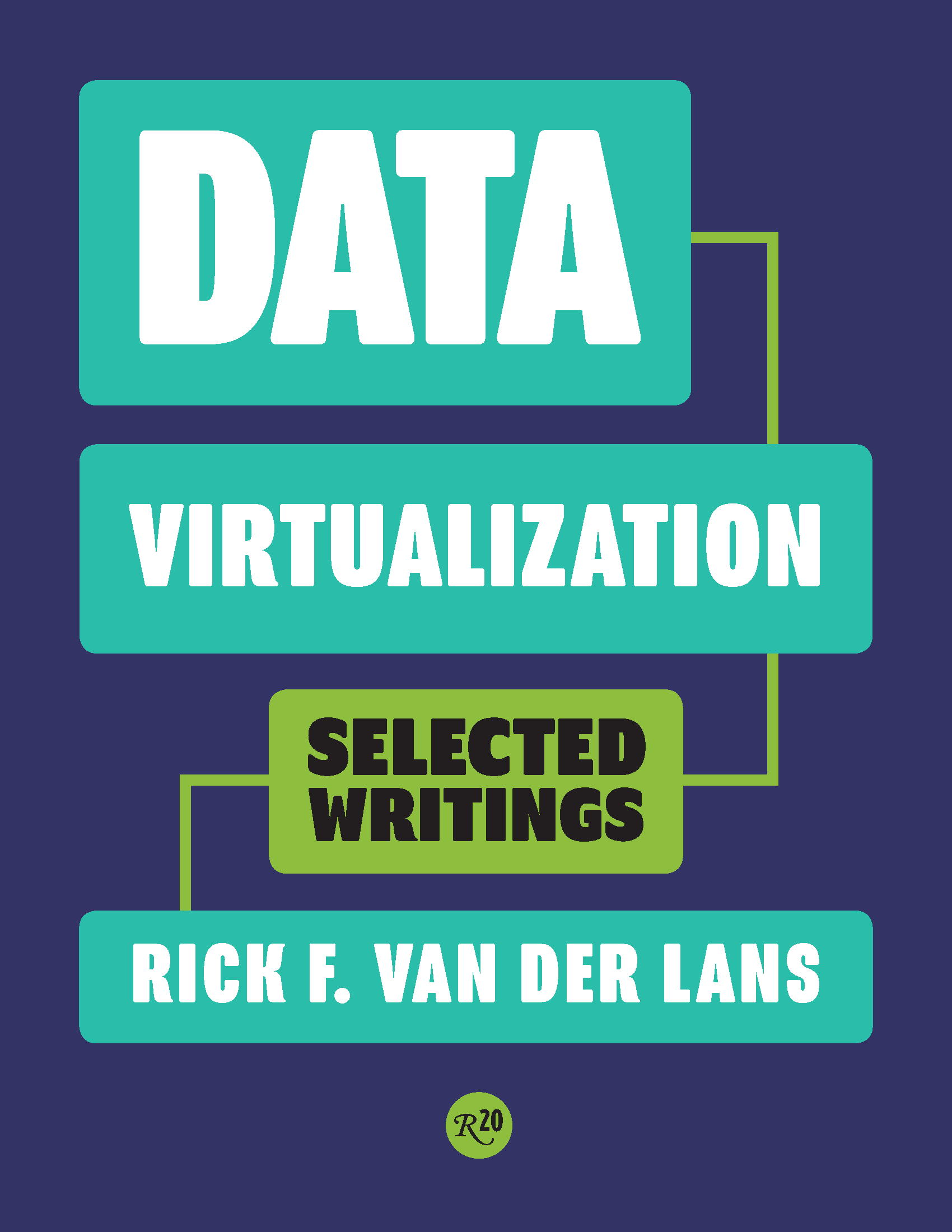
 | HOME | BOOKS | PUBLICATIONS | PRESENTATIONS |
 |
|
IntroductionData virtualization technology allows organizations to quickly unlock the data they have stored in their multitude of databases and systems. Data virtualization can integrate data from multiple sources and can deliver that data in all kinds of forms and shapes to many different types of data consumption, ranging from simple dashboards and reports via Java apps running on a mobile device to advanced forms of analytics initiated by data scientists. Now that organizations want to become more data driven and are on their digital transformation journey, being able to exploit the data is the key to success. Unfortunately, because most of the data is deeply buried in complex applications and stored in intricate database structures, it is often not available when organizations need it. This is where data virtualization comes in. It makes it possible to unlock all the data more easily and more quickly than with most other technologies. Table of ContentsPreface 1. Introduction to Data Virtualization
2. Use Cases of Data Virtualization
3. The Data Delivery Platform
4. The Logical Data Warehouse
5. The Unified Data Delivery Platform
Why this Book?In 2012, I published a book on data virtualization entitled Data Virtualization for Business Intelligence Systems. It describes what data virtualization is, what the pros and cons are, how the tools work internally, and what possible use cases exist. Since the book was published, much has changed. Our insights on data virtualization have changed, the market has changed, we have much more practical experience with the tools, the tools themselves have matured even further, and the technology is being used in larger projects. In short, there is much more known about data virtualization. Therefore, I felt it was time to write a book containing more up-to-date information, which can be seen as an addendum to my original book. Instead of writing the book from scratch, I decided to use existing material. Therefore, the book is a bundling of articles, blogs, and whitepapers I wrote on the data virtualization topic over the last ten years. Some are included in their original form, some have been updated, and some are combined or shortened to fit this book. Why the Title ‘Selected Writings?Most likely, many musicians have heroes, book authors have heroes, and sports people have heroes. I have a hero as well, a database hero. From the first day I started in IT, my hero is C.J. (“Chris”) Date. He is the author of numerous books on databases and he has had an enormous impact on the adoption of relational databases in the market. I have always admired his work. The first book I worked on was a translation of one of his early books Database: A Primer. Right away, it impressed me how clear, educational, and well-structured his writing was. I have read many of his books and enjoyed especially the books in the Selected Writings series, such as Relational Database: Selected Writings which was first published in 1986 . To honor his writing I decided to follow his example, hence the title Data Virtualization: Selected Writings. Original Articles and Blogs?All the articles have been adapted to some degree. Because they were written over a time period of ten years, the terminology was not always used consistently, so I changed that. In some articles passages were removed because they overlapped too much with others. Originally, all the articles had to stand on themselves, so some contained introductory text. I removed most of those pieces of texts to avoid repetition. Reading an introduction fifteen times is no fun. Some articles I enriched with extra notes to increase the value of the article. I have also added comments to the articles to explain why I incorporated them or to clarify some of the remarks made or concepts introduced in the article. Why Now?The first real article I wrote on data virtualization was published in 2009, exactly ten years ago. In all these intervening years I wrote countless articles, blogs, and whitepapers on this and related topics. As indicated, I even wrote a book on data virtualization. I thought that ten years was a good excuse to bundle a selection of these writings. Moreover, it feels as if the market has adopted data virtualization. It has taken some time, but finally, companies are studying, testing, and deploying this technology. Hopefully, making many of these writings easily available, helps the adopters with some of the questions they struggle with. The third reason I decided to publish this book now, is that some of the older articles and blogs are no longer available online or otherwise; now they are. For Whom Is This Book Intended?
|
Copyright (c) 2025 R20/Consultancy B.V.. All rights reserved. |